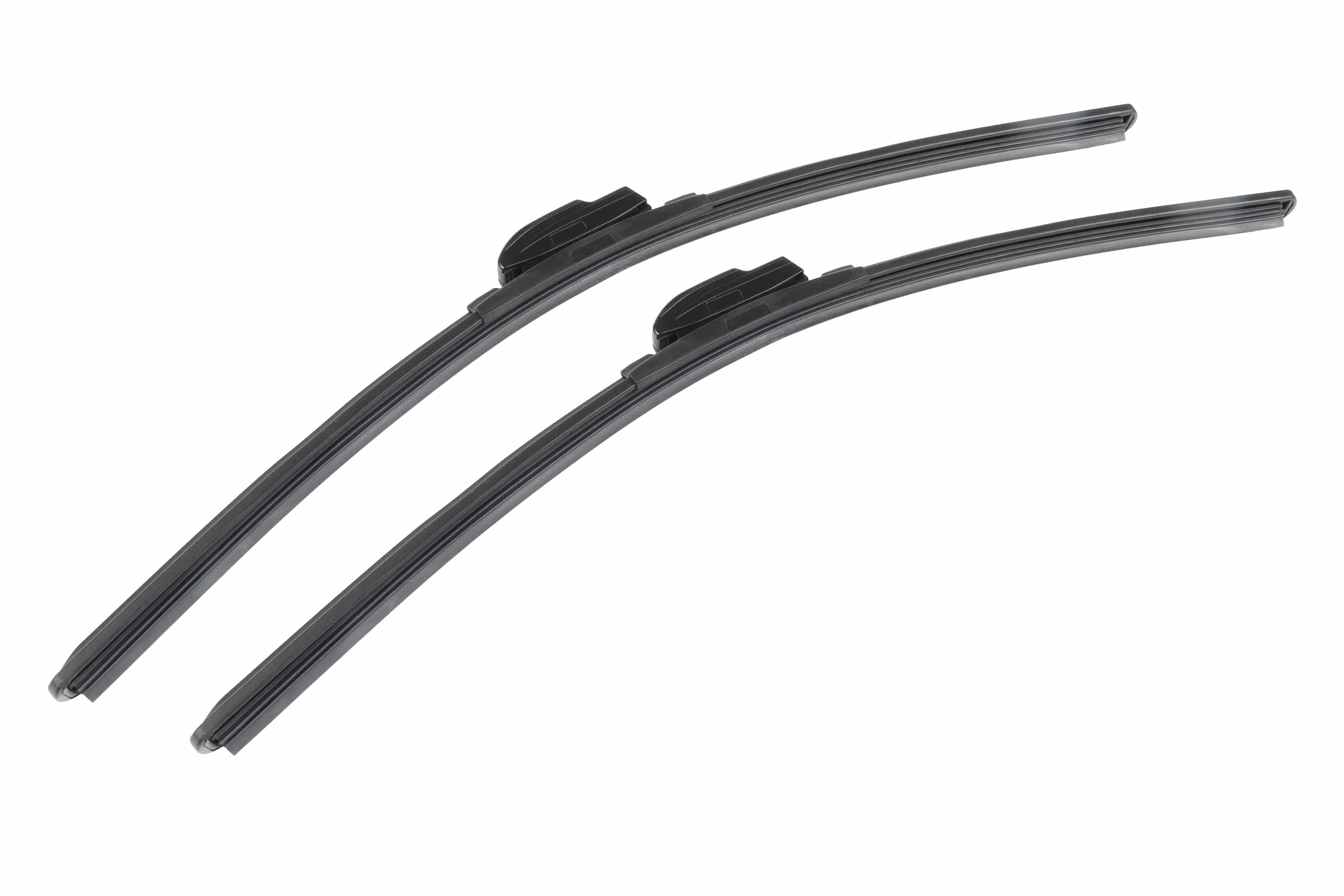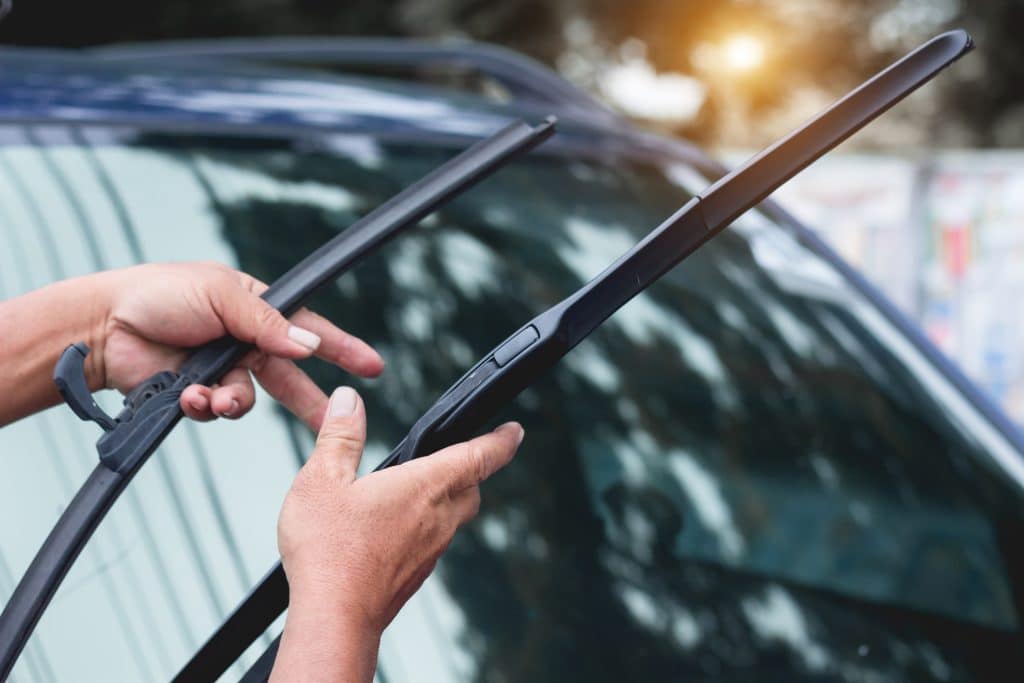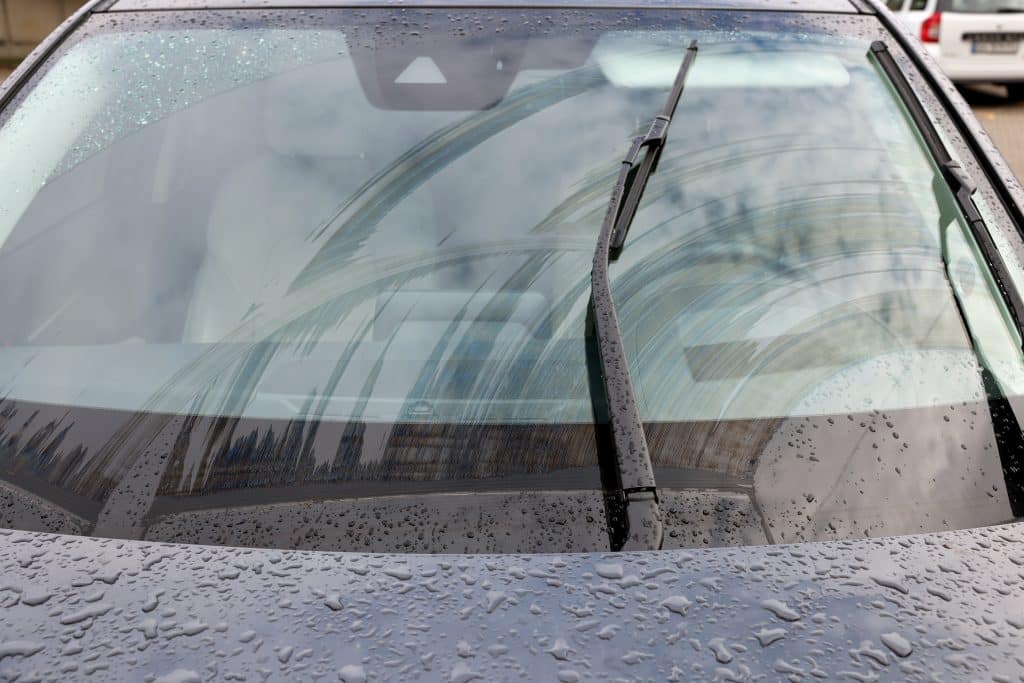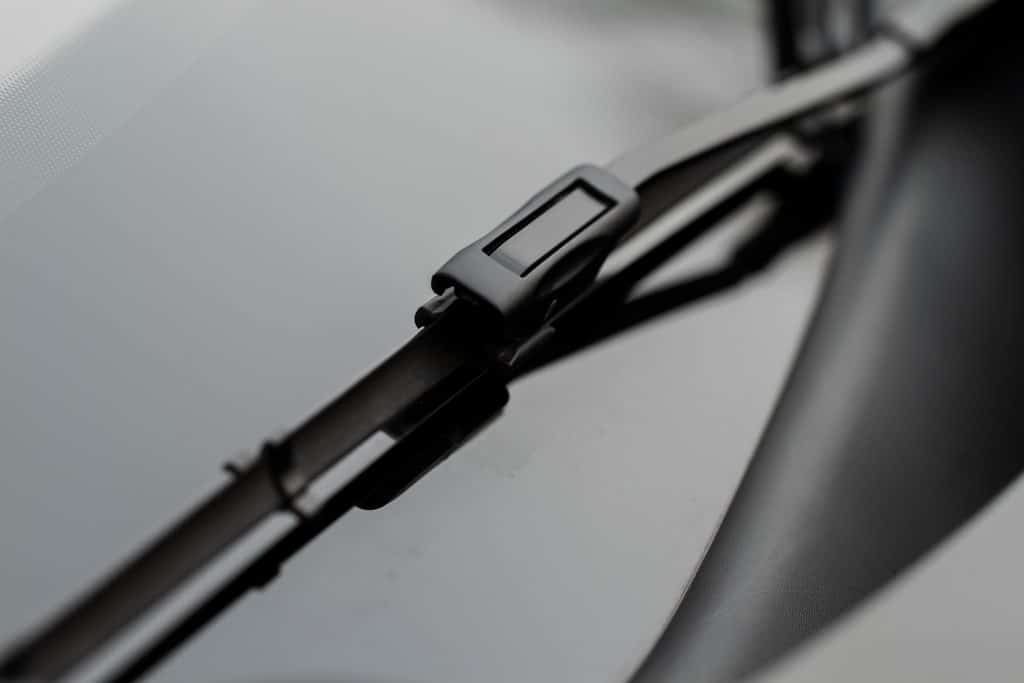Seeing Clearly: Selecting the Best for Your Vehicle
A clear and unobstructed view of the road is essential for safe driving in all weather conditions. Windshield wiper blades play a critical role in maintaining this visibility by keeping your windshield clean and free from rain, snow, dirt, and debris. Selecting the right windshield wiper blades for your vehicle is crucial to ensure optimal performance. This guide will walk you through choosing the best wiper blades for your car.
Whether preparing for inclement weather, planning a road trip, or just maintaining your vehicle, this guide will equip you with the knowledge to choose the best windshield wiper blades for your specific driving conditions and vehicle type. Drive safely and see clearly with the right wiper blades for your car.
Introduction to Windshield Wiper Blades
A clear and unobstructed view of the road is fundamental to safe driving. This visibility becomes even more critical in adverse weather conditions, such as rain, snow, or sleet. That’s where windshield wiper blades come into play. These seemingly simple automotive components are essential for keeping your windshield clean and providing the driver with a clear line of sight.
Here, in the introductory section of our guide, we’ll delve into the importance of windshield wiper blades and highlight the key signs that indicate it’s time to replace them.
The Importance of Windshield Wiper Blades
Windshield wiper blades are designed to sweep your vehicle’s windshield, removing water, debris, and contaminants obstructing your view. They are a vital safety feature, ensuring that you can see the road ahead clearly, which is essential for making split-second driving decisions and avoiding accidents.
Wiper blades are not only essential during heavy rain or snowfall but also in various other situations, including:
1. Light Rain: A drizzle can reduce visibility, making wiper blades crucial for maintaining a clear view.
2. Snow and Ice: Wiper blades equipped to handle snow and ice are necessary in cold climates to prevent buildup on the windshield.
3. Dirt and Dust: Dust and dirt on the windshield can create glare when sunlight hits, making wiper blades useful for keeping the view unobstructed.
4. Bug Splatter: After a long drive, bug splatter can accumulate on the windshield, affecting visibility. Wiper blades help remove this debris.
Signs That It’s Time to Replace Your Wiper Blades
Wiper blades are not a one-time purchase. Over time, they wear out due to exposure to the elements, friction, and usage. Here are some signs that indicate it’s time to replace your wiper blades:
1. Streaking: If your wiper blades leave streaks or smears on the windshield, it’s a clear indication that they are no longer effectively clearing the glass.
2. Chattering or Skipping: Wiper blades should move smoothly across the windshield. If they chatter, skip, or make noise, it’s a sign of wear and tear.
3. Lifting or Not Hugging the Glass: Wiper blades should maintain proper contact with the windshield. If they lift away from the glass, leaving areas uncleaned, they need replacement.
4. Visible Damage: Look for visible signs of damage, such as cracks, splits, or broken rubber edges on the wiper blades.
5. Reduced Performance: If your wiper blades aren’t performing as well as they used to, even if they show no visible damage, it’s a good idea to replace them.
In the following sections, we will explore the different types of wiper blades available, how to choose the right size for your vehicle, considerations for various weather conditions, and more. By the end of this guide, you’ll have the knowledge and tools needed to select the best windshield wiper blades for your specific driving needs, ensuring that you can always see the road ahead clearly and drive safely.
Types of Windshield Wiper Blades
When choosing the right windshield wiper blades for your vehicle, you’ll encounter different types, each with its own features and advantages. Understanding the various wiper blade types will help you decide based on your driving needs. Here are the most common types of windshield wiper blades:
1. Traditional Frame-Style Wiper Blades:
· Description: Traditional frame-style wiper blades are the most common and widely used type. They consist of a metal frame that holds a rubber or synthetic rubber blade. The frame is usually covered to protect it from the elements.
· Advantages:
· Effective at clearing water and debris from the windshield.
· Available in a wide range of sizes to fit most vehicles.
· Often cost-effective and readily available.
· Considerations:
· The frame may collect ice and snow, affecting performance in winter conditions.
· They are generally less aerodynamic, which can result in lift and reduced contact with the windshield at high speeds.
2. Beam-Style Wiper Blades:
· Description: Beam-style wiper blades, or frameless or bracketless wiper blades, lack the traditional metal frame. They are made of a single, spring-like material conforming to the windshield’s curvature.
· Advantages:
· Sleek, aerodynamic design that reduces wind lift and noise at high speeds.
· Excellent performance in various weather conditions, including snow and ice.
· Less vulnerable to clogging with ice and snow.
· Considerations:
· Generally cost more than traditional frame-style blades.
· Limited availability in specific sizes and fitments.
3. Hybrid Wiper Blades:
· Description: Hybrid wiper blades combine elements of both traditional and beam-style blades. They typically have an enclosed frame but lack the multiple pressure points of traditional blades.
· Advantages:
· Enhanced aerodynamics and reduced wind lift compared to traditional frame-style blades.
· Improved performance in adverse weather conditions.
· Suitable for a wide range of vehicle makes and models.
· Considerations:
· May be slightly more expensive than traditional frame-style blades.
4. Winter Wiper Blades:
· Description: Winter wiper blades are designed specifically for cold climates and are built to withstand ice and snow. They often feature a rugged, heavy-duty frame and a rubber shell to protect against ice buildup.
· Advantages:
· Superior performance in snowy and icy conditions.
· Resistant to freezing and clogging.
· Durability in harsh winter weather.
· Considerations:
· May not be suitable for year-round use as they can be less effective in other weather conditions.
5. Silicone Wiper Blades:
· Description: Silicone wiper blades use silicone rubber instead of traditional rubber, providing several advantages. They are typically available in both traditional and beam-style designs.
· Advantages:
· Durable and long-lasting, often outperforming traditional rubber blades.
· Resistant to UV rays and heat, reducing blade deterioration.
· Exceptional water-beading properties, which enhance visibility.
· Considerations:
· Typically more expensive than standard rubber blades.
· Limited availability in some markets.
Choosing the right wiper blade type depends on your climate, driving conditions, and personal preferences. Traditional frame-style wiper blades offer a cost-effective and reliable solution for most drivers. However, hybrid or beam-style blades might be a better choice if you frequently drive in harsh weather or at high speeds. Silicone blades are ideal for those seeking long-lasting performance and exceptional water-repelling properties. Winter wiper blades are essential for cold climates, providing the durability to combat ice and snow. Consider the factors that most matter to you, and select the wiper blade type that aligns with your driving needs.
Choosing the Right Size for Your Windshield Wiper Blades
Selecting the correct wiper blade size is crucial to ensure optimal performance. Using the wrong size can result in uneven wiping and reduced visibility. Here’s how to determine the right size for your vehicle:
1. Consult Your Vehicle’s Manual:
· The easiest way to find your vehicle’s recommended wiper blade size is to check the owner’s manual. It typically provides the correct wiper blade sizes for the front and rear windows.
2. Measure the Existing Blades:
· If you have access to your vehicle, you can measure the length of the existing wiper blades. Start from the tip of one blade to the other. Make sure to measure both the driver’s and passenger’s sides separately, as they may be different lengths.
3. Use Online Tools:
· Several online tools and wiper blade size finders are available. These tools allow you to input your vehicle’s make, model, and year to find the correct wiper blade sizes. Many wiper blade manufacturer websites offer this feature.
4. Visit an Auto Parts Store:
· Visit an auto parts store; the staff can help you find the right wiper blade size for your vehicle. They often have catalogs or databases to look up the correct sizes.
Common Attachment Methods:
In addition to selecting the right size, it’s essential to understand the attachment method used by your vehicle’s wiper arms. Different vehicles use various attachment methods, including:
1. Hook Slot: This is the most common attachment type. The wiper blade has a J-hook or pin that fits into a slot on the wiper arm. It’s essential to ensure that the wiper blade you choose has the right type of hook to match your wiper arm.
2. Pinch Tab: Some vehicles have pinch tab attachments. These blades have a small tab on one side that you pinch to release the blade from the arm.
3. Side Pin: In this method, a pin or metal tab runs through a hole in the wiper arm to secure the blade in place.
4. Bayonet: Bayonet-style attachments feature a small plastic clip on the blade that locks into place when twisted.
Verifying the attachment method is important, especially if you’re replacing the entire wiper blade assembly. If you’re only replacing the rubber blade insert, ensure it’s the right length and type for your wiper arm.
Once you’ve determined the correct size and attachment method, you can confidently select the windshield wiper blades that will provide optimal visibility and safety while driving in various weather conditions.
Considerations for Different Weather Conditions
Choosing the right windshield wiper blades also involves considering the weather conditions you commonly encounter during your drives. Different wiper blades are designed to perform optimally in specific weather conditions. Here are some considerations for various weather conditions:
1. Wiper Blades for Rain and Light Mist:
· traditional frame-style wipers or beam-style blades can work effectively for rain and light mist. They provide consistent and streak-free wiping, keeping your windshield clear for better visibility.
2. Wiper Blades for Snow and Ice:
· In snowy and icy conditions, it’s essential to have wiper blades designed to handle the added weight and potential freezing. Winter wiper blades, often with a rugged frame and covered joints, are best for these conditions. They can prevent ice and snow buildup on the blades, ensuring consistent performance.
3. Wiper Blades for All-Season Use:
· If you experience a mix of weather conditions throughout the year, consider hybrid wiper blades. These blades combine features of traditional and beam-style blades and can provide good performance in both rain and snow. They are versatile and suitable for various climates.
4. Aerodynamic Blades for High-Speed Driving:
· Consider beam-style wiper blades if you frequently drive at high speeds or live in windy areas. They have an aerodynamic design that reduces wind lift and noise, ensuring efficient wiping even at high velocities.
5. Silicone Wiper Blades for Rain and Visibility:
· If you’re looking for superior water-beading properties that enhance visibility during rain, silicone wiper blades are a great choice. They can create a hydrophobic barrier on the windshield, causing rain to bead up and roll off quickly.
6. Windshield Treatment Options:
· In extremely cold conditions, you can apply a windshield treatment like a de-icer or rain repellent. These treatments help prevent ice buildup and make clearing snow from the windshield easier. They can be used in combination with suitable wiper blades for enhanced performance.
7. Regular Maintenance:
· Regardless of the wiper blades you choose, regular maintenance is crucial. Clean the blades and windshield to remove debris and ensure smooth, streak-free wiping.
8. Be Prepared for Emergency Conditions:
· In regions with unpredictable weather, carrying a spare set of wiper blades suitable for the current season in your vehicle is wise. This way, you’re prepared for sudden weather changes.
Always consider your area’s climate and typical weather conditions when selecting wiper blades. Choosing blades optimized for the weather you frequently encounter will enhance your driving safety and ensure a clear and unobstructed view of the road.
Quality and Material of Windshield Wiper Blades
The quality and material of your windshield wiper blades play a significant role in their performance, durability, and longevity. Here’s what you need to know about these essential factors:
Quality:
1. Brand Reputation: Choosing wiper blades from reputable brands with a history of producing high-quality automotive products can greatly impact their performance and longevity. Reputable brands often invest in research and development to improve their wiper blades.
2. Construction: Pay attention to the construction of the wiper blades. High-quality wiper blades have sturdy frames that resist bending and warping. The joints and connection points should be durable and well-designed.
3. Quality of Rubber or Silicone: The quality of the rubber or silicone used in the blade is crucial. Look for blades with high-quality rubber or silicone compounds resistant to wear and tear. Some premium wiper blades may have coatings or additives to enhance durability.
4. Performance in Adverse Conditions: Quality wiper blades are designed to perform well in various conditions, including rain, snow, and extreme temperatures. They should have features that prevent clogging with ice and snow, ensuring consistent performance.
5. Longevity: High-quality wiper blades tend to last longer, which can be cost-effective in the long run. While they may have a higher upfront cost, their extended lifespan can save you money on frequent replacements.
Material:
1. Rubber Wiper Blades: Traditional wiper blades typically feature rubber. High-quality rubber blades are made from a compound that offers durability and resistance to UV rays, heat, and environmental factors that can cause deterioration.
2. Silicone Wiper Blades: Silicone wiper blades are known for superior performance and longevity. They are resistant to heat and UV rays and have excellent water-repelling properties. While they may be more expensive, their durability can make them cost-effective in the long term.
3. Hybrid Wiper Blades: Hybrid wiper blades often combine traditional rubber or silicone with a rugged frame. The materials used in the frame and the quality of the blade determine their overall performance and durability.
4. Winter Wiper Blades: Wiper blades designed for winter use are constructed with materials that can withstand cold temperatures and resist freezing. They often have a more robust frame and a durable outer shell.
5. Aerodynamic Materials: Beam-style wiper blades are constructed with various materials, including synthetic rubber compounds, silicone, and other durable materials. Their design minimizes wind lift and noise at high speeds.
6. Specialized Coatings: Some wiper blades use specialized coatings or treatments to improve performance. These coatings can provide added protection against UV rays and enhance water-repelling properties.
Choosing high-quality wiper blades with durable materials is an investment in safety and long-term performance. While premium wiper blades may have a slightly higher initial cost, they tend to last longer and provide consistent, streak-free wiping, ensuring a clear, unobstructed road view in various weather conditions.
Replacing Your Windshield Wiper Blades
Knowing when and how to replace your windshield wiper blades is crucial to maintaining clear visibility and safe driving. Here’s a step-by-step guide on how to replace your wiper blades:
What You’ll Need:
1. New wiper blades (make sure they are the correct size and type for your vehicle).
2. A clean cloth or paper towel.
3. A small flathead screwdriver (for some wiper arm styles).
4. Your vehicle owner’s manual (for guidance on wiper blade replacement).
Steps to Replace Your Wiper Blades:
1. Determine the Correct Wiper Blade Size:
· Refer to your vehicle owner’s manual or use an online wiper blade size finder to determine the correct size for your front and rear wiper blades.
2. Lift the Wiper Arm:
· Gently lift the wiper arm away from the windshield until it’s in a vertical position. If your wiper arm uses a lock or has a hinged cap, you may need to open it to release the wiper blade.
3. Remove the Old Wiper Blade:
· Depending on the type of attachment your wiper blade uses, you’ll need to follow the corresponding steps:
· Hook Slot Attachment: Depress the small tab or button on the wiper blade. Slide the blade down and out of the hook slot.
· Pinch Tab Attachment: Pinch the small tab on the blade and slide the blade out of the arm.
· Side Pin Attachment: Lift the wiper blade away from the arm and slide it off the pin.
· Bayonet Attachment: Release the clip or lever on the blade and slide it out.
4. Prepare the New Wiper Blade:
· If your new wiper blades come with multiple adaptors, select the one that matches the attachment style on your wiper arm. Follow the manufacturer’s instructions for adaptor installation.
5. Attach the New Wiper Blade:
· Slide the new wiper blade into the wiper arm, following the reverse of the removal process. Make sure it locks securely in place.
6. Lower the Wiper Arm:
· Carefully lower the wiper arm back onto the windshield. Be sure it doesn’t hit the windshield with too much force, as this can damage the new wiper blade.
7. Test the Wiper Blades:
· Turn on your wipers and test the new blades to ensure they function correctly. Check for any streaking or skipping. If the blades don’t perform well, they may not be properly installed or require adjustment.
8. Repeat for the Other Wiper Blade:
· If replacing the driver’s and passenger’s side wiper blades, repeat the above steps for the other blade.
9. Dispose of the Old Wiper Blades:
· Old wiper blades should be properly disposed of. Many auto parts stores accept old wiper blades for recycling.
Tips:
· Replace both wiper blades simultaneously, even if one works well. This ensures consistent wiping performance.
· Inspect your wiper blades regularly for signs of wear and tear, and replace them as soon as they show any deterioration.
· When handling wiper blades, avoid touching the rubber or silicone wiping element with your bare hands. Oils from your skin can reduce their effectiveness.
· If you’re unsure how to replace your wiper blades, don’t hesitate to seek assistance from an auto parts store or a professional mechanic.
By following these steps and maintaining your wiper blades, you can ensure that they provide a clear and unobstructed view of the road, promoting safe and confident driving in all weather conditions.
Top Windshield Wiper Blade Brands
When choosing high-quality windshield wiper blades, it’s essential to consider reputable brands known for their durability and performance. Here are some of the top windshield wiper blade brands that have earned a solid reputation in the automotive industry:
1. Bosch: Bosch is a well-respected name in the automotive world, known for producing a wide range of high-quality auto parts. Their wiper blades are recognized for their durability, performance, and innovative technology, making them a top choice for many vehicle owners.
2. Rain-X: Rain-X is famous for its expertise in weather-related automotive products. Their wiper blades are designed to excel in various weather conditions and are known for their streak-free wiping. Rain-X also offers innovative products like beam-style wiper blades and water-repellent treatments.
3. Michelin: The Michelin brand is synonymous with tires, but they also produce high-quality windshield wiper blades. Michelin wiper blades are known for their reliability and exceptional performance in different weather conditions.
4. Trico: Trico is one of the wiper blade industry’s oldest and most established names. They offer a wide range of wiper blades, including traditional and beam-style options, designed for reliable and consistent performance.
5. Aero: Aero wiper blades have gained popularity for their sleek and aerodynamic design, which reduces wind lift and noise. They offer a range of wiper blade options suitable for various vehicles.
6. ANCO: ANCO wiper blades are known for their affordability and value. They provide efficient wiping performance in different weather conditions and are often a top choice for budget-conscious consumers.
7. Valeo: Valeo produces a variety of automotive parts, including wiper blades. Their products are recognized for their quality and innovation, offering features like advanced rubber compounds and built-in spoilers for improved performance.
8. SilBlade: SilBlade specializes in silicone wiper blades, known for their durability and exceptional water-repelling properties. These blades often last longer than traditional rubber blades and maintain excellent performance.
9. Pilot Automotive: Pilot Automotive wiper blades are known for their quality and affordability. They offer a range of wiper blade styles suitable for different vehicles.
10. ACDelco: ACDelco, a division of General Motors, produces a variety of automotive parts, including wiper blades. Their products are designed to meet or exceed OEM (Original Equipment Manufacturer) standards, ensuring reliable performance.
When selecting wiper blades, it’s essential to consider the type of blade that suits your vehicle, your driving conditions, and your budget. Additionally, check the manufacturer’s recommendations and compatibility to ensure the wiper blades will fit your vehicle’s make and model. By choosing wiper blades from one of these reputable brands, you can feel confident in the performance and durability of your wiper blades, ensuring a clear and unobstructed view of the road in various weather conditions.
Maintenance and Care of Windshield Wiper Blades
Proper maintenance and care of your windshield wiper blades are essential to ensure they function effectively and provide a clear line of sight during your drives. Here are some maintenance and care tips:
1. Regular Inspection:
· Inspect your wiper blades regularly for signs of wear and tear. Check for any cracks, splits, or visible damage to the rubber or silicone wiping element. If you notice any issues, it’s time to replace the wiper blades.
2. Clean Your Windshield:
· Keep your windshield clean from dirt, debris, and bug splatter. A clean windshield reduces the stress on the wiper blades and helps them last longer.
3. Avoid Using Wipers on a Dry Windshield:
· Avoid running your wipers on a dry windshield. This can cause unnecessary wear on the blades. If your windshield is dry, use the windshield washer fluid to lubricate it before operating the wipers.
4. Clear Ice and Snow Before Using Wipers:
· Before using your wipers in cold weather, clear any ice or heavy snow from the windshield to prevent damage to the blades and to ensure effective wiping.
5. Gently Remove Snow and Ice:
· If you need to clear snow or ice from the wiper blades, do so gently to avoid bending or damaging them.
6. Use a Windshield Treatment:
· Consider using a windshield treatment like a rain repellent or de-icer to keep your windshield clean and make it easier to remove ice and snow in winter.
7. Lift Wiper Blades When Parked:
· When parking your vehicle for extended periods, especially in hot weather, lift the wiper blades away from the windshield to prevent them from sticking to the glass and causing damage.
8. Clean the Blades:
· Periodically clean the wiper blades with a damp cloth or paper towel to remove any dirt, oil, or residue that may accumulate on the rubber or silicone wiping element. Avoid using harsh chemicals that can deteriorate the blades.
9. Replace Both Blades:
· It’s recommended to replace both wiper blades simultaneously, even if one appears in better condition. This ensures consistent performance and a clear view.
10. Consider Blade Inserts:
· If you prefer not to replace the entire wiper blade assembly, you can purchase replacement rubber or silicone inserts. These are typically more affordable and eco-friendly.
11. Invest in Quality Wiper Blades:
· Quality wiper blades tend to last longer and require less maintenance. While they may have a slightly higher upfront cost, they can be cost-effective in the long run.
Proper care and maintenance of your wiper blades extend their lifespan and contribute to safer driving by ensuring a clear and unobstructed view of the road. Regularly checking and maintaining your wiper blades can save you from the inconvenience of poor visibility during inclement weather conditions.
Frequently Asked Questions (FAQs) about Windshield Wiper Blades
1. How often should I replace my windshield wiper blades?
· Wiper blade replacement frequency can vary based on factors like climate and usage. As a general guideline, consider replacing your wiper blades every 6 to 12 months or when you notice reduced wiping performance, streaking, or visible damage.
2. Can I replace just the wiper blade inserts, or must I replace the entire assembly?
· You can often replace wiper blade inserts, which are more cost-effective and eco-friendly. However, check your vehicle’s compatibility and the manufacturer’s recommendations.
3. How do I choose the right size of wiper blades for my vehicle?
· Refer your vehicle’s owner’s manual for the recommended wiper blade sizes. Alternatively, you can use an online wiper blade size finder, consult an auto parts store, or measure the existing wiper blades.
4. What type of wiper blades should I use: traditional frame-style, beam-style, or hybrid?
· The choice depends on your vehicle, driving conditions, and personal preferences. Traditional frame-style blades are suitable for most situations. Beam-style blades are ideal for high speeds and adverse weather conditions, while hybrid blades offer versatility.
5. How do I clean my wiper blades?
· Periodically clean your wiper blades with a damp cloth or paper towel to remove dirt and debris. Avoid using harsh chemicals that can damage the rubber or silicone wiping element.
6. Can I use my wipers to de-ice my windshield?
· It’s not recommended to use wipers to remove heavy ice or snow. Instead, clear the windshield manually to avoid damaging the blades. Consider using a de-icer or scraping the ice first.
7. Do silicone wiper blades perform better than rubber ones?
· Silicone wiper blades are known for their durability and water-repelling properties. They can outperform traditional rubber blades, especially in heavy rain. However, they are usually more expensive.
8. Can I replace my wiper blades or seek professional help?
· Replacing wiper blades is a relatively simple task that most vehicle owners can do. Consult your owner’s manual for guidance, or seek help from an auto parts store if unsure.
9. What should I do if my wiper blades make noise or skip across the windshield?
· Noise or skipping can be due to a dirty windshield, worn wiper blades, or misalignment. Clean the windshield, check the blades for damage, and ensure they are properly installed.
10. Is it essential to replace both front wiper blades simultaneously?
· Replacing both wiper blades simultaneously is recommended to maintain consistent performance and safety. Even if one blade appears fine, it’s best to replace both to ensure even wiping.
Conclusion: Clarity and Safety on the Road
In conclusion, windshield wiper blades are often an overlooked but critical component of your vehicle, ensuring clarity and safety on the road. They are pivotal in providing a clear line of sight, particularly in adverse weather conditions. Regular maintenance, proper care, and timely replacement of wiper blades are essential to guarantee their effective performance.
You can enhance your driving safety by choosing the right wiper blades, considering factors like size, type, quality, and the specific weather conditions you encounter. Reputable brands like Bosch, Rain-X, and Michelin offer wiper blades known for their quality and durability, making them worthwhile investments.
Remember to inspect your wiper blades regularly, clean your windshield, and avoid running wipers on a dry surface. These simple steps can go a long way in prolonging the life of your wiper blades and ensuring a clear and unobstructed view of the road.
Whether driving through a rainstorm, snowfall, or on a sunny day, well-maintained wiper blades contribute to your safety and the safety of others on the road. So, prioritize the care and maintenance of your wiper blades and enjoy peace of mind with optimal visibility during your journeys. Safe travels!







